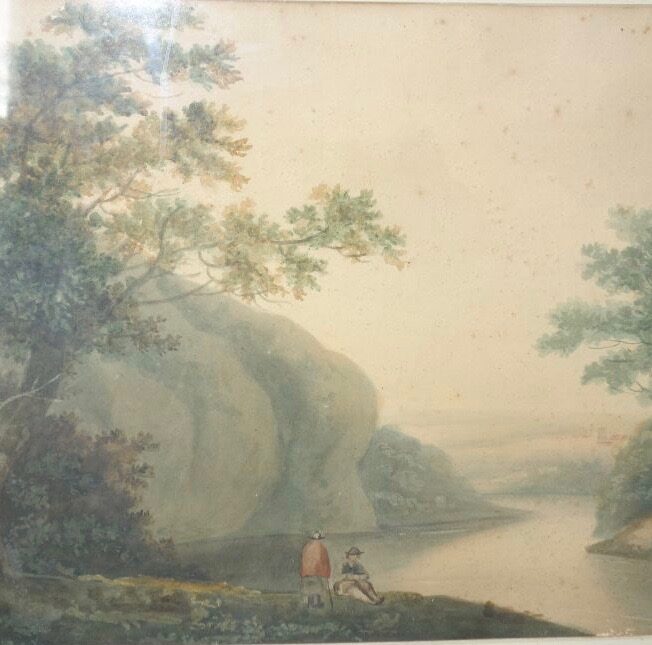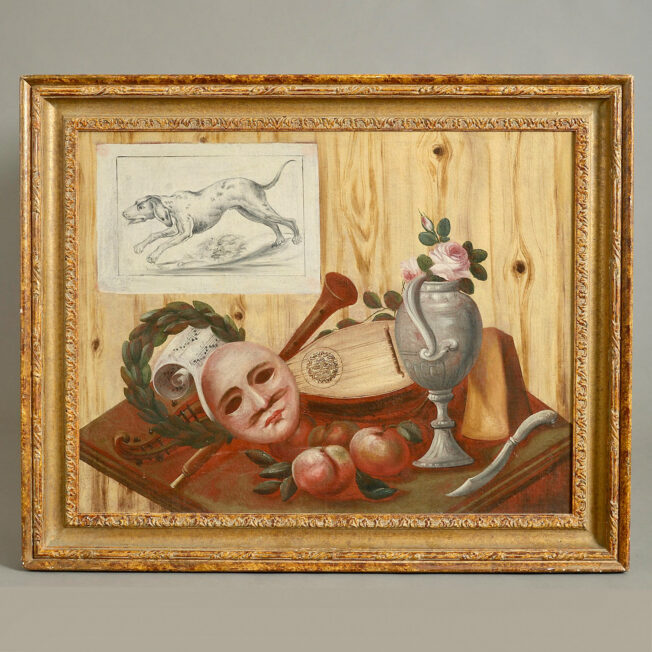Large Early 19th Century Drawing of a Titus Tatius
£2,800
An exceptional and striking drawing depicting the head of Titus Tatius, King of the Sabines from Jacques-Louis David’s painting The Intervention. Expertly executed in pencil on paper and presented in the original giltwood frame.
Jacques-Louis David
Jacques-Louis David (30 August 1748 – 29 December 1825) was a French painter in the Neoclassical style, considered to be the preeminent painter of the era. In the 1780s his cerebral brand of history painting marked a change in taste away from Rococo frivolity toward classical austerity and severity and heightened feeling harmonising with the moral climate of the final years of the Ancien Régime.
David later became an active supporter of the French Revolution and friend of Maximilien Robespierre (1758–1794), and was effectively a dictator of the arts under the French Republic. Imprisoned after Robespierre’s fall from power, he aligned himself with yet another political regime upon his release: that of Napoleon, the First Consul of France. At this time he developed his Empire style, notable for its use of warm Venetian colours. After Napoleon’s fall from Imperial power and the Bourbon revival, David exiled himself to Brussels, then in the United Kingdom of the Netherlands, where he remained until his death. David had many pupils, making him the strongest influence in French art of the early 19th century, especially academic
The Intervention of the Sabine Women
The Intervention of the Sabine Women is a 1799 painting by the French painter Jacques-Louis David, showing a legendary episode following the abduction of the Sabine women by the founding generation of Rome.
David began planning the work while he was imprisoned in the Luxembourg Palace in 1795. France was at war with other European nations after a period of civil conflict culminating in the Reign of Terror and the Thermidorian Reaction, during which David had been imprisoned as a supporter of Robespierre. David hesitated between representing either this subject or that of Homer reciting his verses to his fellow Greeks. He finally chose to make a canvas representing the Sabine women interposing themselves to separate the Romans and Sabines, as a “sequel” to Poussin’s The Rape of the Sabine Women.
Work on the painting commenced in 1796, after his estranged wife visited him in jail. He conceived the idea of telling the story, to honour his wife, with the theme being love prevailing over conflict and the protection of children. The painting was also seen as a plea for the people to reunite after the bloodshed of the revolution. Its realization took him nearly four years.
The painting depicts Romulus’s wife Hersilia – the daughter of Titus Tatius, leader of the Sabines – rushing between her husband and her father and placing her babies between them. A vigorous Romulus prepares to strike a half-retreating Tatius with his spear, but hesitates.
The rocky outcrop in the background is the Tarpeian Rock, a reference to civil conflict, since the Roman punishment for treason was to be thrown from the rock. According to legend, when Tatius attacked Rome, he almost succeeded in capturing the city because of the treason of the Vestal Virgin Tarpeia, daughter of Spurius Tarpeius, governor of the citadel on the Capitoline Hill. She opened the city gates for the Sabines in return for “what they bore on their arms”. She believed that she would receive their golden bracelets. Instead, the Sabines crushed her to death and threw her from the rock, later named for her.









